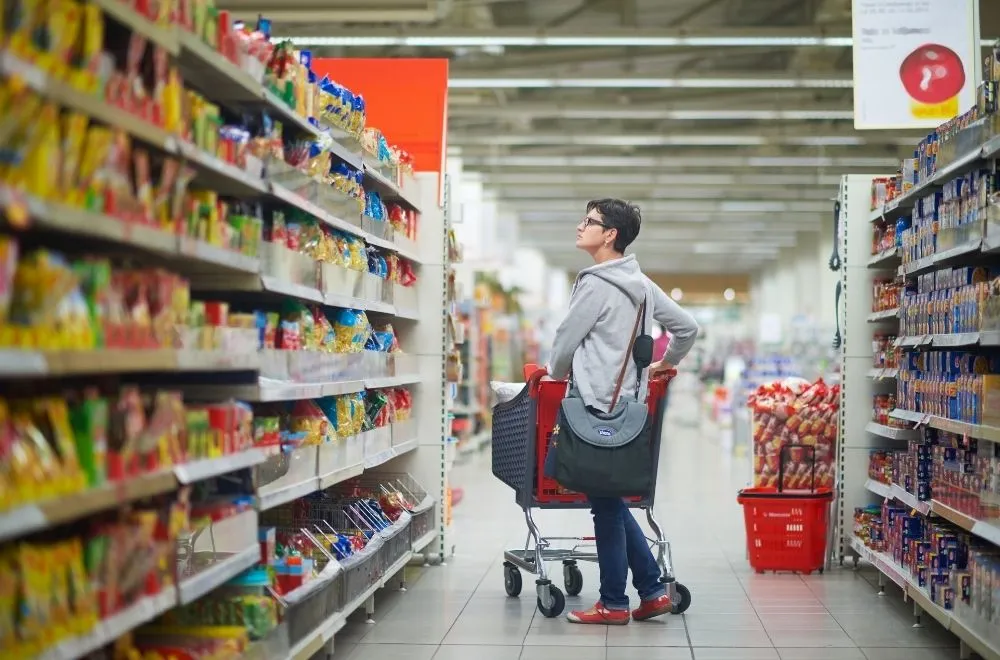One of the biggest growth areas to come out of 2020 was in eCommerce grocery and convenience retail media. The industry saw explosive growth as consumers looking for ways to avoid brick and mortar tried online grocery delivery services. More importantly, many of these first-time consumers chose to stick around.
Instacart saw a 500% increase in order volume during 2020. Instacart is expanding beyond grocery to include more convenience and non-food retailers. The grocery and convenience retail media company now has 500+ retailers including 7 Eleven, Price Rite, and the recently announced Walgreens.
Consumer packaged goods (CPG) brands looking for new ways to grow brand awareness, increase repeat purchase behavior, and cross-sell should all take advantage of convenience retail media. However, succeeding in these marketplaces requires a different advertising strategy compared to traditional retailers or eCommerce marketplaces.
Convenience Stores Present New Advertising Approach
CPG brands advertising on Instacart or other convenience retail media marketplaces will find some key differences compared to advertising on Amazon or Walmart. The retailers Instacart partners with – Shop’n Save, Publix, Walgreens, etc. – have control over what prices to list, what coupons to offer, and other purchasing decisions.
However, CPG brands do have some control over their SKUs. Instacart’s Content Library gives brands more control over messaging and advertising. Brands can’t choose a specific store or region, they must advertise their portfolio nationally.
Brands can also offer discounts apart from the discounts retailers choose to offer. If a retailer offers a coupon or discount, Instacart will automatically suppress your coupon to prevent double dipping.
Different SKUs will also work for convenience stores compared to other eCommerce marketplaces. Pacvue users have found Club SKUs perform well on Instacart and are able to boost advertising for those products.
Convenience Retail Media Advertising Tactics
In a study of consumer behavior on Instacart, data revealed 40-50% of purchased items come from search, 20-35% come from browse and discover, and 20-30% come from Buy it Again lists. With more than half of items purchased coming from browsing and repeat purchase behavior, it isn’t enough to simply focus on Paid Search advertising. Boosting advertising to win sales throughout the customer journey is crucial.
Cross-selling and Basket Building
During 2020, Instacart saw a 35% increase in average basket size. For CPG brands, cross-selling with complementary items can help take advantage of consumer shopping missions and boost sales.
Instacart provides insights into basket affinities and cross-shop data to help brands understand the relationship between products and sub-categories. With CPG brands, these relationships are much more apparent and can be a valuable tool. This data can then be used for product targeting to serve advertising based on basket affinities.
Repeat Purchase Behavior
After Search, Buy it Again is the area CPG brands focus their most advertising spend on Instacart. With up to 30% of purchases coming from Buy it Again lists, Instacart is a key platform for generating repeat purchase behavior and increasing brand loyalty.
Since Instacart is more flexible in how it allows advertisers to conquest and be competitive, it is possible to pay your way into these Buy it Again and “Did you Forget” placements. Using Paid Search helps increase organic rankings and get your brand into shopping carts. Featured Products can also help conversions, drive immediate search, and put you in the basket which is where a lot of consumers start their journey.
Featured Products
As mentioned, half of all purchases are still driven by search. On Instacart, each order includes an average of 20 searches. This means Paid Search should still be an important part of your convenience retail media advertising strategy. In addition to the benefits of winning your search results, you can also help improve organic rankings to increase placement for cross-selling and repeat purchases.
Adjust your keyword bidding to prioritize getting into the first row of search results for your categories. The first row is where 70% of conversions from search take place. In fact, the first three rows is where 88% of conversions take place. Using Featured Products to ensure you are near the top of these results is critical.
Test New Convenience Retail Media Strategies
While the above strategies work for many CPG brands on Instacart, your brand may find success elsewhere. The benefit of advertising on emerging markets like Instacart is the ability to jump in early to test and learn with low CPCs.
Test the above strategies and experiment with Delivery Promotions, Hero Banners, and other techniques to learn what works best for you. As grocery eCommerce marketplaces continue to grow and consumer behavior changes, it is important to experiment often and constantly adjust your strategy.
If you’re interested in learning more about grocery and convenience retail media and Instacart strategies for CPG brands, check out a recent webinar Pacvue ran answering your most pressing questions.
Learn more:













